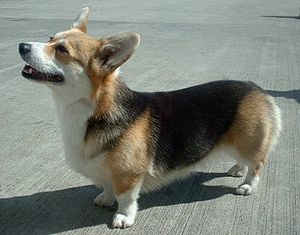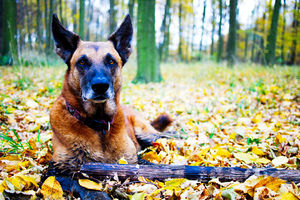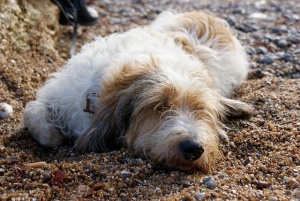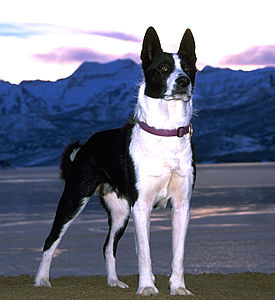 |
| Vital Statistics: |
| Place of Origin: Wales |
| Group: Herding dog |
| Height: 10-12 in. |
| Weight: males 30 lbs., females 28 lbs. |
| Life span: 12-14 yrs. |
| Trainability: high |
| Good with children: yes with early socialization |
| Good with other pets: yes with early socialization, good with cats |
The Corgi may have been brought to Wales by invading Celts in 1200 BC. The Pembroke Welsh Corgi is considered a separate breed from the Cardigan Welsh Corgi, but for now we’ll talk about the Pembroke which is the more popular of the breed in the U.S. Author, Rita Mae Brown, writes in her series about the adventures of 2 cats, Mrs. Murphy and Pewter and Tee, a Welsh Corgi. Welsh legend tells of children playing in the fields as they tended cattle when they found 2 puppies. Thinking they looked like foxes, the children brought the pups home. Their parents told them that the dogs were ridden by the fairies and pulled their carriages in battle. The dogs’ markings on their backs indicated where the saddles were placed and their eternal bond with the fairies.
What does the Pembroke Welsh Corgi look like?
In spite of its short legs, the Corgi is very agile. Its head is foxlike and nose is black. Eyes are dark, ears are large and erect. The Pembroke has almost no tail. Coat is medium length, slightly coarse with a weather resistant underdercoat. Colors are red, sable, fawn, black or tan with white markings on face, paws, chest and neck.
What is the Pembroke Welsh Corgi’s temperament?
The Pembroke is an excellent family dog, good with children who treat it gently. It is very intelligent and courageous, energetic and easily trained. The Pembroke will defend its family no matter what the danger to itself. It should have regular exercise as it easily becomes overweight.
What are the Pembroke Welsh Corgi’s uses?
The Pembroke was used for herding cattle, nipping at their heels and barking. It is a good watchdog and guard dog and an excellent companion dog.
Possible Health Issues
Hip dysplasia, progressive retinal atrophy, retinal dysplasia, hypothyroidism, cryptoridism (one testicle undescended), epilepsy, reproductive problems
- Australian Cattle Dog
- Australian Kelpie
- Australian Shepherd
- Bearded Collie
- Beauceron
- Belgian Sheepdog – Groenendael
- Belgian Tervuren
- Bergamasco
- Berger Picard
- Blue Lacy
- Border Collie
- Bouvier des Flandres
- Briard
- Cardigan Welsh Corgi
- Catahoula Leopard Dog
- Collie
- English Shepherd
- Entlebucher
- Finnish Lapphund
- German Shepherd
- Hovawart
- Icelandic Sheepdog
- Laika
- Lancashire Heeler
- Miniature American Shepherd
- Mudi
- Old English Sheepdog
- Polish Lowland Sheepdog
- Puli
- Pumi
- Pyrenean Shepherd
- Shetland Sheepdog
- Standard Schnauzer
- Swedish Vallhund



